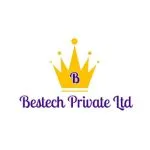Top Newsletter Companies
In 2025, 71% of B2B marketers cite email newsletters as a key content-marketing strategy, while global email marketing revenue is projected to reach $17.9 billion by 2027.
Top newsletter companies help businesses craft compelling, well-designed newsletters that build subscriber loyalty, increase engagement, and drive conversions. These agencies specialize in everything from copywriting and email design to segmentation, automation, and performance tracking. Whether you’re a startup launching your first campaign or an enterprise scaling email outreach, these experts tailor newsletter strategies that align with your brand goals. Their services ensure your emails stand out in crowded inboxes, resonate with readers, and deliver measurable results. By leveraging data-driven insights, top newsletter firms transform newsletters into powerful tools for nurturing leads, sharing updates, and retaining customers.
List of the Best Newsletter Agencies | Top Newsletter Companies in the World
-
Employees: 51 to 100
-
Min. Project amount: $1,000+
-
Country: Madhyapur Thimi, Nepal

SAP Champs INC.
-
Employees: 51 to 100
-
Min. Project amount: Undisclosed
-
Country: Wilmington, DE

TechnBrains
-
Employees: 251 to 500
-
Min. Project amount: $25,000+
-
Country: Grapevine, TX

Idea2App
-
Employees: 501 to 1000
-
Min. Project amount: $1,000+
-
Country: Indore, India

21Twelve Interactive LLP
-
Employees: 11 to 50
-
Min. Project amount: $1,000+
-
Country: Ahmedabad, India

WPWeb Infotech
-
Employees: 51 to100
-
Min. Project amount: $5,000+
-
Country: Ahmedabad, India

Bestech
-
Employees: 251 to 500
-
Min. Project amount: $10,000+
-
Country: London, UK

Levontechno
-
Employees: 51 to 100
-
Min. Project amount: $50 - $99 / hr
-
Country: Bengaluru, India

Flutter Agency
-
Employees: 50 to 100
-
Min. Project amount: $5,000+
-
Country: Gandhinagar, India

Dataintelo
-
Employees: 101 to 250
-
Min. Project amount: Undisclosed
-
Country: Ontario, CA
1.What Does a Newsletter Company Do?
A newsletter company focuses on creating and managing email newsletters that keep audiences informed, engaged, and loyal. Their services typically include:
Strategic planning and audience segmentation
Writing and editing compelling content
Designing responsive, mobile-friendly templates
Setting up email automation workflows
Monitoring open rates, clicks, and conversions
The goal is to deliver value-packed newsletters that strengthen brand relationships and encourage action.
A newsletter company specializes in creating, managing, and optimizing email newsletters to help businesses build strong relationships with their audience. These companies use design, content strategy, segmentation, and performance tracking to deliver newsletters that inform, engage, and convert.✍️ 1. Crafts Relevant and Valuable Content
Newsletter companies write compelling content tailored to your audience’s interests and needs. This may include:
Industry news & trends
Product or service updates
Promotional offers or discounts
Event announcements
Educational content like tips or how-tos
They ensure your messaging is clear, on-brand, and aligned with your goals.🎨 2. Designs Visually Appealing Layouts
First impressions matter. These agencies design mobile-friendly, visually appealing templates that:
Reflect your brand identity
Are easy to navigate and read
Include eye-catching images and CTAs
Optimize layout for high engagement
They ensure your emails look great across all devices and platforms.
🧩 3. Segments Your Audience for Personalization
A key part of newsletter success is targeted delivery. Newsletter companies:
Segment your list based on user behavior, location, or demographics
Personalize content using names, past interactions, or purchase history
Send tailored messages that improve open rates and clicks
This personalization leads to better engagement and fewer unsubscribes.📅 4. Manages Scheduling and Distribution
They handle the logistics of:
Setting up email campaigns and automation flows
Choosing the right time and frequency for delivery
Ensuring deliverability and avoiding spam filters
Managing subscriber lists and opt-ins
This takes the technical and time-consuming tasks off your plate.
📊 5. Tracks Performance and Optimizes Results
Newsletter companies use analytics to measure:
Open and click-through rates
Bounce rates and unsubscribe metrics
Conversion tracking (signups, purchases, etc.)
A/B test results for subject lines, layouts, or content
Based on this data, they refine your strategy for better ROI.
2.Why Are Newsletters Important for Businesses? How Do Newsletter Companies Personalize Content Effectively?
Newsletters are a cost-effective way to:
Keep your audience updated on new products, services, or events
Share valuable insights, tips, and curated content
Drive traffic to your website or landing pages
Build long-term relationships with subscribers
Boost brand visibility and authority
Unlike social media, newsletters offer direct access to your audience’s inbox, making them a powerful tool for engagement and conversion.
Despite the rise of social media and instant messaging, email newsletters remain one of the most powerful tools in digital marketing. Why? Because they allow brands to speak directly to a targeted audience in a personal, measurable, and cost-effective way.
✅ 1. Direct Access to Your Audience
Unlike social media platforms that control reach through algorithms, newsletters land directly in the subscriber’s inbox.
You own your email list — not a third-party platform
There’s no algorithm blocking your visibility
Emails are more likely to be seen than social posts
This gives you greater control over communication and reach.
📈 2. High ROI and Cost-Effectiveness
According to industry research, email marketing can yield an average ROI of $36–$42 for every $1 spent.
Low cost compared to paid ads
Automated campaigns reduce workload
Ideal for small and large businesses alike
Newsletters provide one of the highest returns in the digital marketing toolbox.
🧠 3. Builds Brand Authority and Loyalty
Regular newsletters keep your brand top-of-mind while delivering value.
Share knowledge, tips, and trends
Tell stories and humanize your brand
Highlight customer testimonials or case studies
This builds trust and positions your business as a go-to resource.
📊 4. Personalization Increases Engagement
Modern email tools allow for customized experiences based on user behavior.
Personalized subject lines increase open rates
Segmentation allows targeting by interest or buying stage
Dynamic content speaks directly to reader needs
The result? More engagement, more conversions.
📬 5. Easy to Track, Test, and Improve
Email newsletters come with rich analytics you can’t always get elsewhere.
Open rates, click-throughs, and bounce rates
A/B testing for subject lines or CTAs
Clear conversion tracking to measure ROI
You can continuously refine your strategy based on real user behavior.
Personalization is a major factor in newsletter success — and newsletter companies use strategic techniques and tools to make every email feel tailor-made for the reader. Personalized content increases open rates, click-throughs, and customer loyalty.
🧑💻 1. Audience Segmentation
Instead of sending the same message to everyone, companies divide your email list based on:
Demographics (age, location, industry)
Buyer journey stage (new lead vs. loyal customer)
Purchase behavior or product interest
Engagement level (frequent readers vs. inactive users)
This allows them to target messages that resonate with specific segments.📨 2. Dynamic Content Insertion
Using advanced email platforms, newsletter companies insert dynamic blocks of content that change based on the recipient’s profile.
For example:
“Recommended for you” product blocks
Different banners for different locations
Personalized greetings (e.g., “Hi, John!”)
This makes every email feel more relevant and timely.
🕵️♂️ 3. Behavioral Triggers
Companies track subscriber activity and send emails triggered by user behavior. These could include:
Abandoned cart reminders
Follow-ups after a product view or download
Special offers after repeat purchases
These emails are timely, relevant, and highly effective at converting.
🧪 4. A/B Testing and Data-Driven Optimization
They test subject lines, email layouts, CTA buttons, and personalization strategies to see what performs best — and adjust accordingly.
For example:
“Hey Sarah, ready for an upgrade?” vs. “Is it time for your next purchase?”
Personalized discount codes vs. general ones
This constant experimentation ensures continuous improvement and better ROI.
📊 5. Personalization Without Overstepping
Newsletter companies also respect boundaries, ensuring data privacy and using subtle personalization that feels helpful, not invasive.
They ensure compliance with GDPR, CAN-SPAM, etc., and focus on creating trust-based relationships.
3.How Do I Choose the Right Newsletter Company?
When selecting a newsletter company, look for:
Experience across your industry or audience type
Creative and technical capabilities (design + automation)
Knowledge of platforms like Mailchimp, Klaviyo, or HubSpot
Data analytics and performance tracking expertise
Positive reviews, case studies, or client references
A strong newsletter agency should act as a strategic partner, not just a service provider.
Choosing the right newsletter company is essential for building lasting relationships with your audience, growing brand engagement, and driving conversions. Here’s a step-by-step guide to help you make an informed decision.
✅ 1. Assess Their Strategic Expertise
Look beyond just design and delivery. The right company should:
Understand your industry and target audience
Offer help with content strategy and segmentation
Provide data-driven solutions tailored to your goals
Ask: Can they align newsletters with my broader marketing plan?
✍️ 2. Review Their Content & Design Capabilities
A newsletter’s success depends heavily on how well it communicates and looks.
Look for companies that offer:
Professional, brand-aligned design
Clear, compelling, audience-focused copy
Mobile-friendly, responsive layouts
Ask to see past work or case studies.
📊 3. Check Their Reporting & Analytics Tools
Make sure they provide detailed reports on:
Open rate
Click-through rate
Bounce/unsubscribe rates
Conversions
Insightful reporting helps improve performance over time.
⚙️ 4. Evaluate Their Tools and Automation Features
Ask about their tech stack. A good agency should support:
Behavioral triggers
Segmentation and personalization
A/B testing
CRM/email platform integrations
This enables smarter, more targeted campaigns.
🤝 5. Consider Communication & Support
Choose a company that offers:
Regular updates and strategy sessions
Clear timelines and deliverables
Responsive customer support
A collaborative, proactive partner makes all the difference.
4.How Is the Success of a Newsletter Measured?
Success is measured using KPIs such as:
Open Rate – indicates subject line effectiveness
Click-Through Rate (CTR) – shows content relevance
Conversion Rate – reflects how many users take action
Unsubscribe/Spam Rate – flags potential issues with content or targeting
Subscriber Growth – tracks list-building success
Newsletter companies regularly analyze these metrics to refine strategy and improve ROI.
To ensure newsletters are achieving their goals, newsletter companies rely on key performance indicators (KPIs) that help measure effectiveness, optimize content, and prove ROI. These metrics provide valuable insights into how subscribers interact with your emails — and what drives results.
📬 1. Open Rate
This tells you how many recipients opened your email. It reflects:
Subject line effectiveness
Sender reputation
Timing of the email
A strong open rate indicates good audience interest and trust.
✅ Tip: Personalized subject lines and clear, concise copy improve open rates.
🔗 2. Click-Through Rate (CTR)
CTR measures how many people clicked a link or button in the email. This shows how engaging your content and CTAs (calls to action) are.
High CTR = Effective message → Action taken.
✅ Tip: Use compelling CTA buttons, visuals, and value-driven copy.
💬 3. Click-to-Open Rate (CTOR)
This metric compares clicks to opens — it’s a quality score of your email content once opened.
A high CTOR means the content delivered on the promise of the subject line.
✅ Tip: Keep content relevant, readable, and personalized.
📉 4. Bounce Rate
This shows how many emails failed to reach inboxes, either due to invalid addresses (hard bounce) or temporary issues (soft bounce).
A high bounce rate hurts your sender reputation.
✅ Tip: Regularly clean and update your email list.
❌ 5. Unsubscribe Rate
This tells you how many people opted out of your list. Some unsubscribes are natural, but a spike can signal poor targeting or irrelevant content.
✅ Tip: Segment your audience, respect preferences, and provide value.
🛍️ Bonus: Conversion Rate
For campaigns focused on goals (like purchases, sign-ups, or bookings), conversion rate tracks how many recipients completed the desired action.
✅ Tip: Tie newsletters to specific offers or landing pages with strong CTAs.




